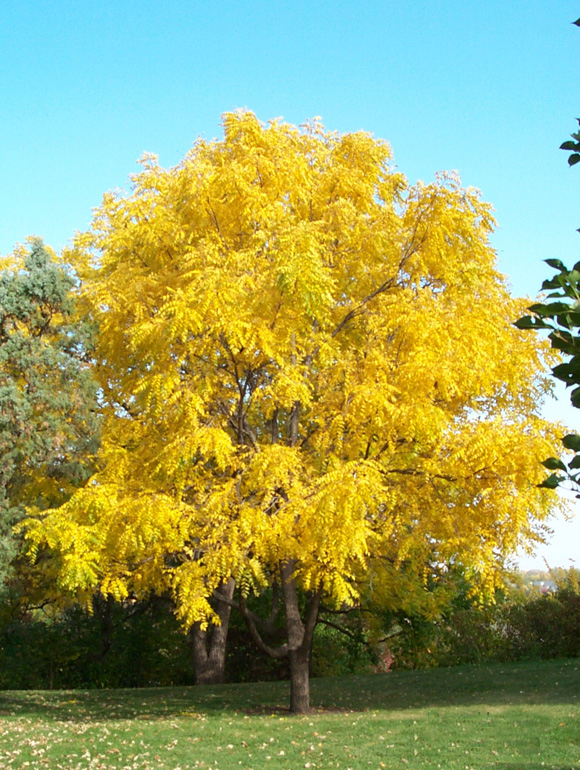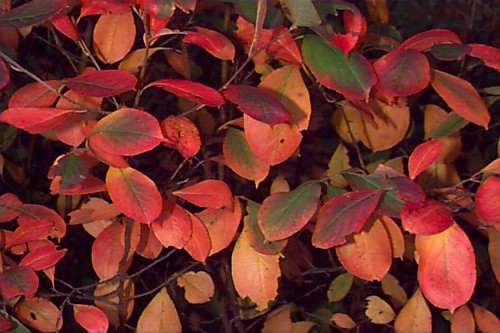Stressed trees are also more likely to suffer from pests and disease as their ability to fight off these ailments is reduced – this adds to the likelihood of early leaf drop.
However, there is still some optimism held by fall “leaf-peepers” (people who seek out brilliant fall colours to view) that this fall will produce the coveted bright reds and oranges we’re all waiting for. Fall weather also impacts leaf colour in a significant way. Warm, sunny days followed by cool nights encourage bright foliage. Here is how it works:
As the days grow shorter, this triggers the tree to prepare for hibernation. In doing so, the tree starts to remove useful resources from its leaves to store and reuse next spring. This includes breaking down chlorophyll – the component responsible for the green colour. As chlorophyll concentrations are reduced, other leaf contents become visible.

Carotenoids, which are responsible for the yellows, are always present in the leaf but only seen as the chlorophyll is reduced. Anthocyanins, which make up the red colours, are produced by sugars in the leaf. This is where fall weather plays an important role – sunny days are needed for the remaining chlorophyll to produce these sugars, and cool nights to slow down their transfer, keeping them in the leaf.
One last thing I find really cool about tree biology in the fall is that while pulling all of the useful things back into its trunk and roots, the tree also uses this time to get rid of unneeded materials through its leaves. Waste materials can include silicon and heavy metals, and these can also affect leaf colour.
Certain species are well-known for their memorable fall colour palates (ie. sugar maple), however genetic variation within a certain species can also affect the colour in a specific tree. Consider one tree that is genetically pre-disposed to transfer sugars more slowly than others – it would be more likely display richer red colours!
Given that there are so many variables that affect leaf colour, it becomes a challenge to make accurate predictions. But if you want to create a colourful fall backyard, below are some safe bets for native tree and shrub species that will help you fill up the colour spectrum:

Trees:
sugar maple – yellow-to-orange-to-red foliage
honey locust – golden yellow
black walnut - bright yellow
red maple – golden yellow to fire red
red oak – golden orange to crimson
paper birch – white bark (when mature); golden-orange foliage
tamarack – golden needles
pine/spruce/cedar/hemlock – evergreen
Shrubs:
black chokeberry – bright orange to purple
fragrant sumac – bright orange to red
bayberry – semi-evergreen with persistent bluish berries
red osier dogwood –yellow-orange to red-purple; bright red stems
witchhazel – yellow flowers in late fall (after leaves have dropped)
snowberry – persistent white berries
And remember, taking good care of your trees will encourage exceptional fall leaf colours!
Recommended reading: Peter Thomas. Trees: Their Natural History. Cambridge University Press, 2000. Native shrubs can be ordered for delivery in Toronto and York Region this fall by calling 416-413-9244; subject to availability. If you are interested in a tree, check out our Backyard Tree Planting Program – we still have some species left for fall!
